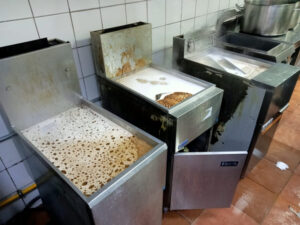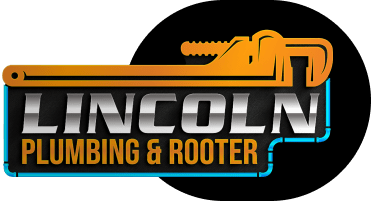
If your commercial kitchen uses a grease trap, keeping it clean isn’t just a maintenance task—it’s a legal and operational necessity. Overlooked or improperly maintained grease traps can result in health code violations, costly plumbing repairs, and even business shutdowns.
At Lincoln Plumbing & Rooter, we help restaurants, cafeterias, and food service businesses throughout Southern California stay compliant and operational with reliable grease trap cleaning services. Here’s why regular grease trap maintenance is essential and how it protects both your plumbing and your reputation.
What Does a Grease Trap Do?
A grease trap is a plumbing device designed to intercept fats, oils, and grease (commonly known as FOG) before they enter the wastewater system. FOG hardens as it cools, and if allowed into sewer lines, it can cause serious clogs—not just on your property, but in municipal systems as well.
Grease traps prevent this by capturing FOG in a separate chamber, allowing water to flow out while holding the grease for later removal. However, traps must be cleaned regularly to continue functioning properly.
What Happens If You Don’t Clean Your Grease Trap?
Neglecting your grease trap may seem like a way to cut corners, but it can backfire quickly. Problems caused by infrequent cleanings include:
1. Drain Backups and Foul Odors
When a grease trap overflows, grease and food solids can enter your drains and back up into sinks, dishwashers, or even onto kitchen floors. Foul odors from accumulated waste can also drive away customers and create unsafe working conditions.
2. Health Code Violations
Health departments in California often require documentation of grease trap maintenance. An inspection that finds an overflowing or clogged grease trap could lead to:
- Immediate citations
- Fines and penalties
- Temporary or permanent closure of your establishment
3. Plumbing Emergencies
An overfilled grease trap can clog not only your internal plumbing but also the municipal sewer lines, leading to costly repairs and liability for damages.
4. Higher Cleaning Costs
Waiting too long between cleanings can cause hardened grease to coat the walls of the trap and connecting pipes, making it much more difficult—and expensive—to clean.
How Often Should a Grease Trap Be Cleaned?
There’s no universal rule for cleaning frequency, as it depends on the size of your trap and how much grease your operation generates. However, many businesses follow the “25% rule”—clean the trap when FOG and solids reach 25% of the trap’s capacity.
In general:
- Small restaurants or cafes: every 1–2 months
- High-volume kitchens (e.g., cafeterias, food courts): every 2–4 weeks
- Large grease traps (1,000+ gallons): quarterly or as required by code
At Lincoln Plumbing & Rooter, we offer scheduled service plans so you never miss a cleaning and always stay in compliance.
What to Expect During Professional Cleaning
Our licensed technicians at Lincoln Plumbing & Rooter use professional-grade tools to:
- Remove all grease, solids, and sludge
- Scrape and clean the trap’s interior
- Inspect for signs of wear, corrosion, or blockages
- Properly dispose of grease waste in accordance with local regulations
- Provide documentation for your maintenance records
We also check nearby plumbing lines for any early signs of clogs or damage, helping prevent future issues before they become emergencies.
Don’t Let Grease Shut You Down
A clean grease trap isn’t just about hygiene—it’s about keeping your kitchen open, your staff safe, and your business running smoothly. Routine maintenance is a small investment that prevents big problems.
If you can’t remember the last time your grease trap was cleaned, it’s time to schedule service. Call Lincoln Plumbing & Rooter at (909) 780-0887 today to set up a professional cleaning and ensure your kitchen is operating safely and efficiently.


